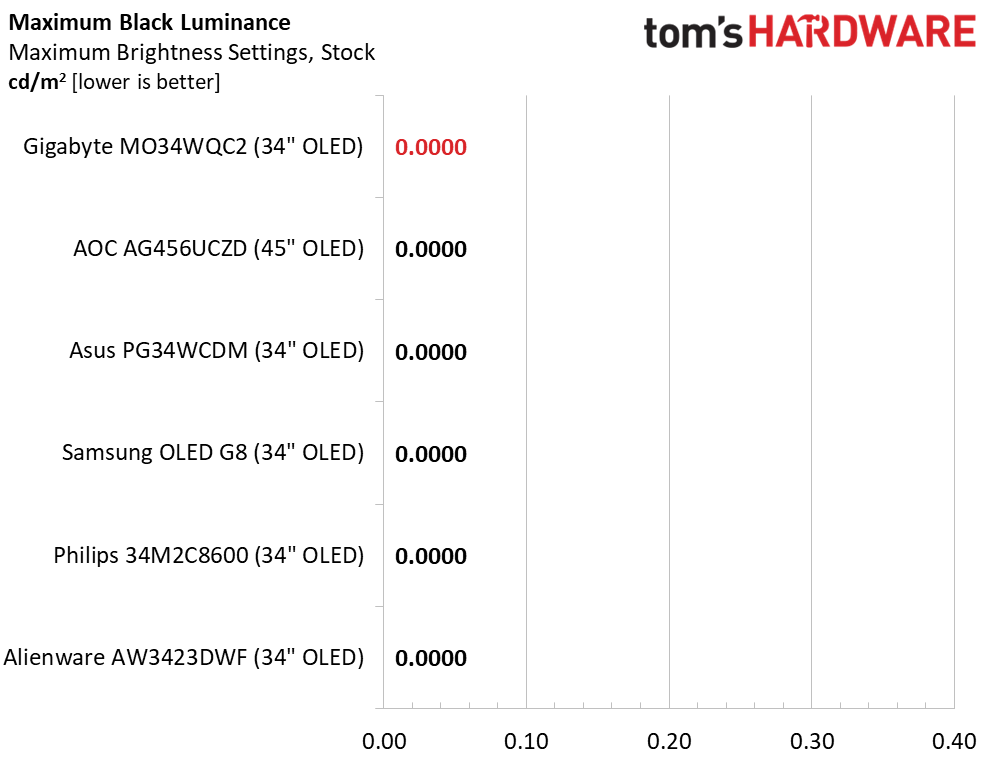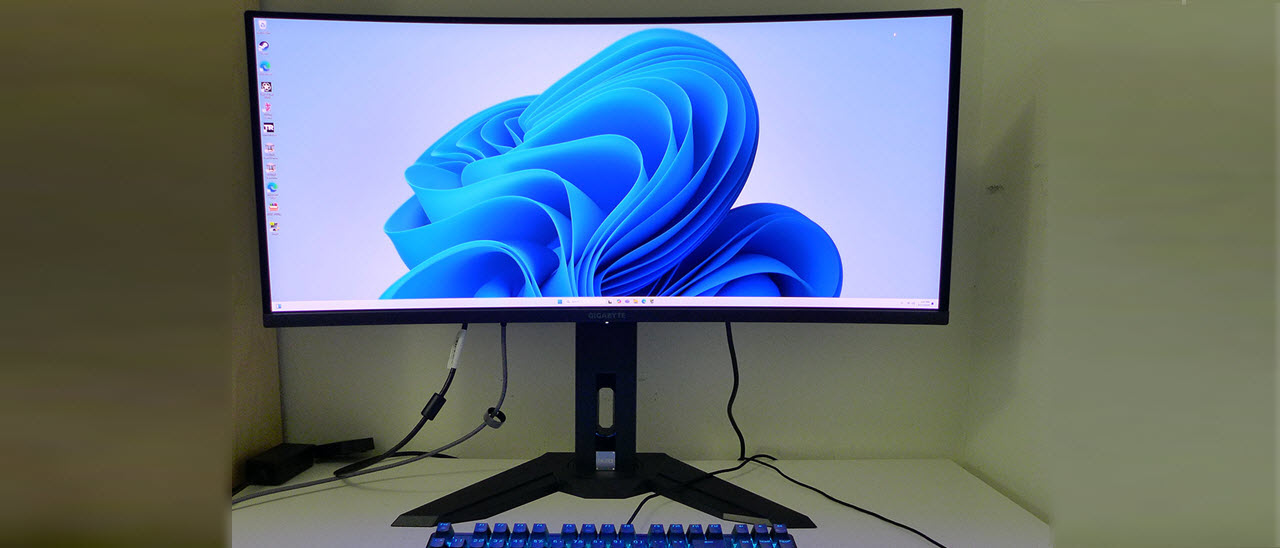Why you can trust Tom's Hardware
To read about our monitor tests in-depth, please check out Display Testing Explained: How We Test PC Monitors. We cover brightness and contrast testing on page two.
Uncalibrated – Maximum Backlight Level



Gigabyte rates the MO34WQC2 at 250 nits peak for SDR content. That is true if you leave the APL Stabilize option set at Low, the default. That effectively means constant brightness is on. For a brighter image, set it to High. Then, SDR will peak at over 434 nits, the panel’s maximum capability. As usual in a test of OLED monitors, black levels and contrast cannot be measured.
After Calibration to 200 nits



When setting the MO34WQC2’s brightness control, you must first decide which APL Brightness option to use. Low means constant brightness which is the dimmest setting. That’s when you’ll want to use the values I posted on page one. If you set it to High, which I recommend, you’ll have to reduce the brightness slider to avoid eye fatigue because the image is almost twice as bright. The great thing is that contrast is infinite no matter what combination of settings you use because black levels are always at zero. This holds true in the ANSI test as well where I cannot measure the black squares.
Test Takeaway: There is no difference in measured black levels or contrast between any OLED monitor. The MO34WQC2 isn’t one of the brightest panels I’ve tested, but it can deliver an honest 434-nit peak when you set APL Stabilize to High. If you prefer a dimmer option, set it to Low.
MORE: Best Gaming Monitors
MORE: How We Test PC Monitors
MORE: How to Buy a PC Monitor
Get Tom's Hardware's best news and in-depth reviews, straight to your inbox.
MORE: How to Choose the Best HDR Monitor
Current page: Brightness and Contrast
Prev Page Response, Input Lag, Viewing Angles and Uniformity Next Page Grayscale, Gamma and Color
Christian Eberle is a Contributing Editor for Tom's Hardware US. He's a veteran reviewer of A/V equipment, specializing in monitors. Christian began his obsession with tech when he built his first PC in 1991, a 286 running DOS 3.0 at a blazing 12MHz. In 2006, he undertook training from the Imaging Science Foundation in video calibration and testing and thus started a passion for precise imaging that persists to this day. He is also a professional musician with a degree from the New England Conservatory as a classical bassoonist which he used to good effect as a performer with the West Point Army Band from 1987 to 2013. He enjoys watching movies and listening to high-end audio in his custom-built home theater and can be seen riding trails near his home on a race-ready ICE VTX recumbent trike. Christian enjoys the endless summer in Florida where he lives with his wife and Chihuahua and plays with orchestras around the state.
